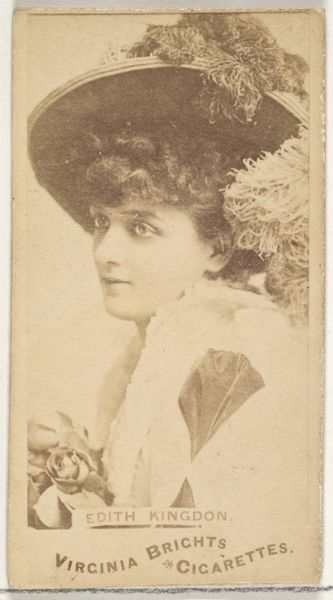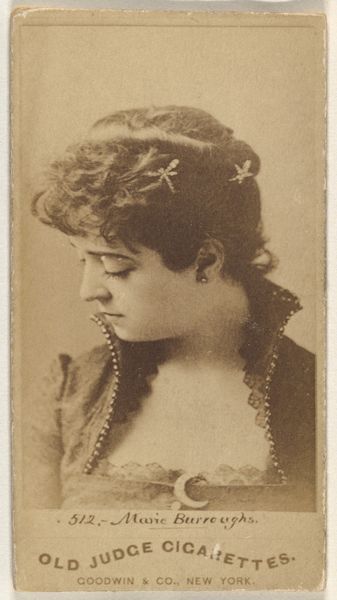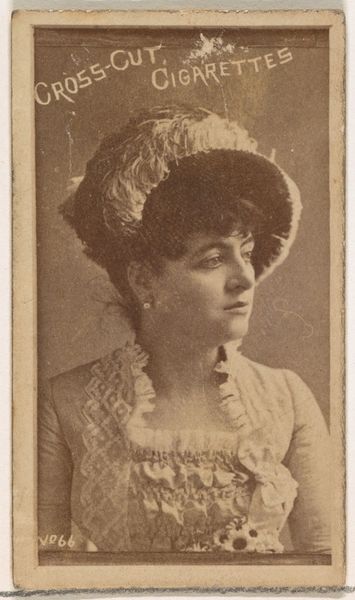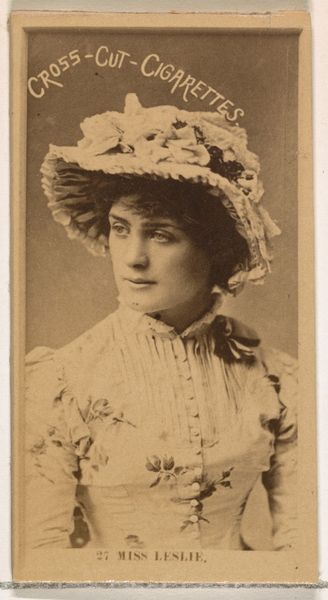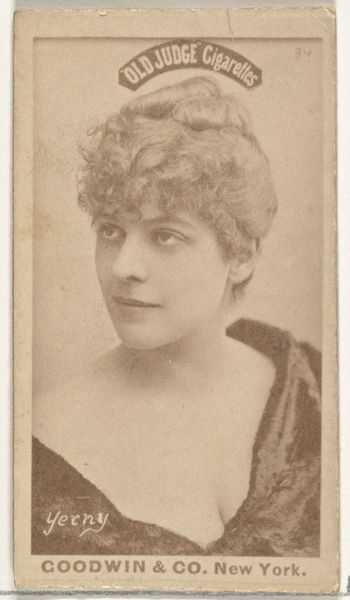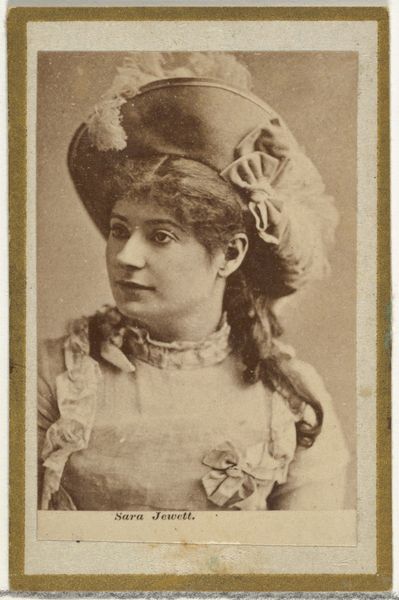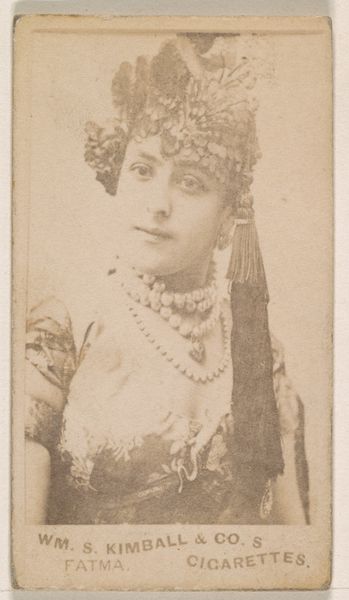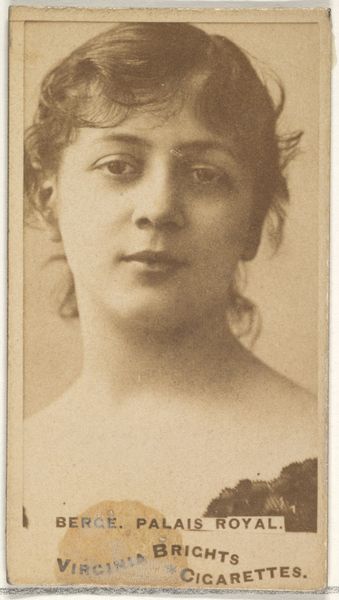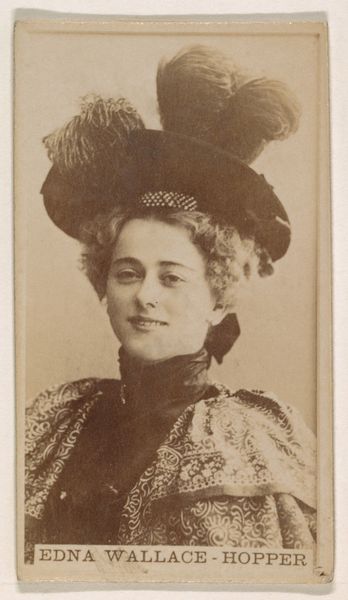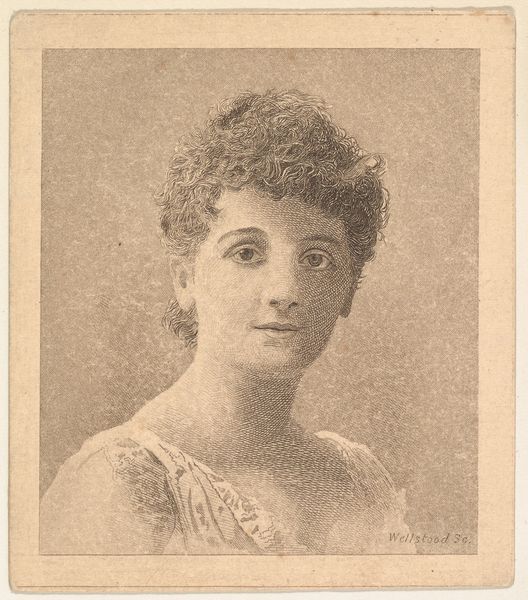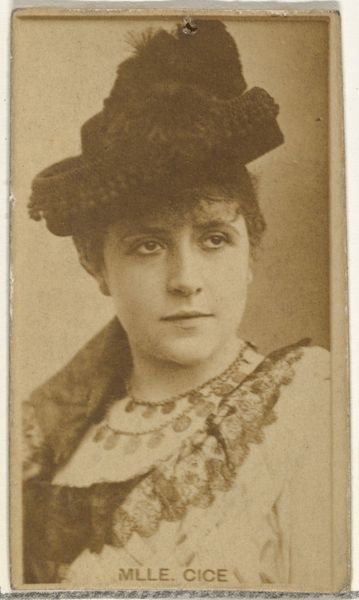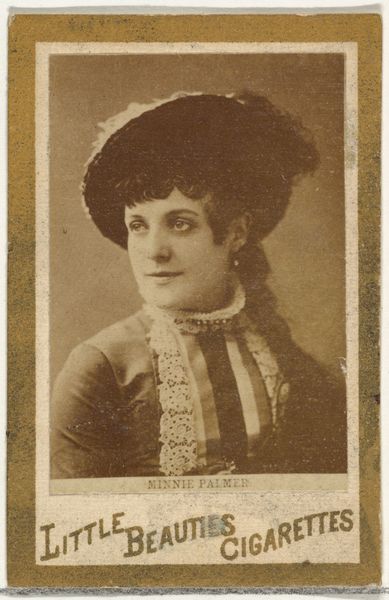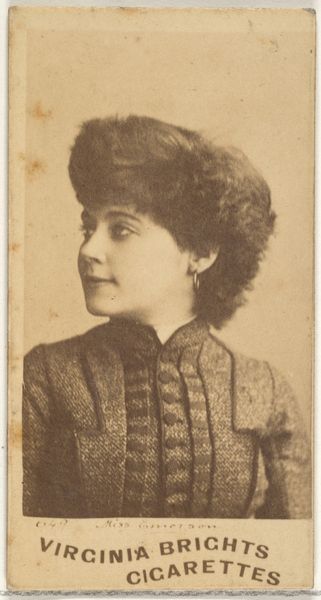
Portrait, from the Women's Portraits series (N198) issued by Wm. S. Kimball & Co. 1889
0:00
0:00
drawing, print
#
portrait
#
drawing
# print
Dimensions: Sheet: 3 1/4 × 2 13/16 in. (8.2 × 7.2 cm)
Copyright: Public Domain
Curator: This print, "Portrait, from the Women's Portraits series (N198)," was issued by Wm. S. Kimball & Co. around 1889. Editor: It strikes me immediately as rather melancholic. The neutral tones and the sitter's gaze, averted slightly to the left, contribute to this overall somber mood. Curator: It's fascinating how a simple drawing on a printed medium can evoke such feelings. Consider that these were commercial images, often inserted into cigarette packs as collectibles. So, while aesthetically interesting, they functioned within a system promoting a particular, perhaps idealized, view of women during that era. What does the composition say to you? Editor: The focus is certainly drawn to the sitter’s face. Note the way the artist uses hatching and cross-hatching to define the planes of her face, creating a subtle play of light and shadow. It directs your eye upward to the extravagant hat she wears—ostentatious. Curator: That hat is certainly a marker of status, and speaks to the constraints placed on women. In some ways she appears ornamented and poised. Think of the corset pressing in her form to conform to some socially enforced form, but also trying to exude a demeanor of some social stature and even agency. Editor: The delicate lace collar frames her face, softening the lines of her shoulders, but that feather atop her head is a statement. You can see her slightly upturned lip and the tilt of the head, not meeting our eyes dead-on; this creates some emotional distance between her and the viewer. A very self-aware aesthetic construction. Curator: Precisely. We need to unpack those constructed narratives. Images like these helped disseminate particular notions of beauty and femininity. Who was the model? Was she willing? How was she compensated? It begs that this particular portrait acts more broadly as a lens through which we can understand how such systems shaped identity for all women, and what that says about today. Editor: Well, by decoding the artistic strategy behind the composition, use of line, and form, we uncover how meaning is visually constructed. Looking closely at the visual clues, we can understand it regardless of history. The universal artistic method comes to bear to show our interpretation, in a sort of pure and immediate relationship to it. Curator: By intersecting formalism and a sensitivity to the social currents that both shaped this object and gave it form, we get closer to appreciating the artwork, but in our today, not some historical fantasy of the era. Editor: I see form as the first point of entry, then the consideration and context give it layers. They can work simultaneously.
Comments
No comments
Be the first to comment and join the conversation on the ultimate creative platform.
